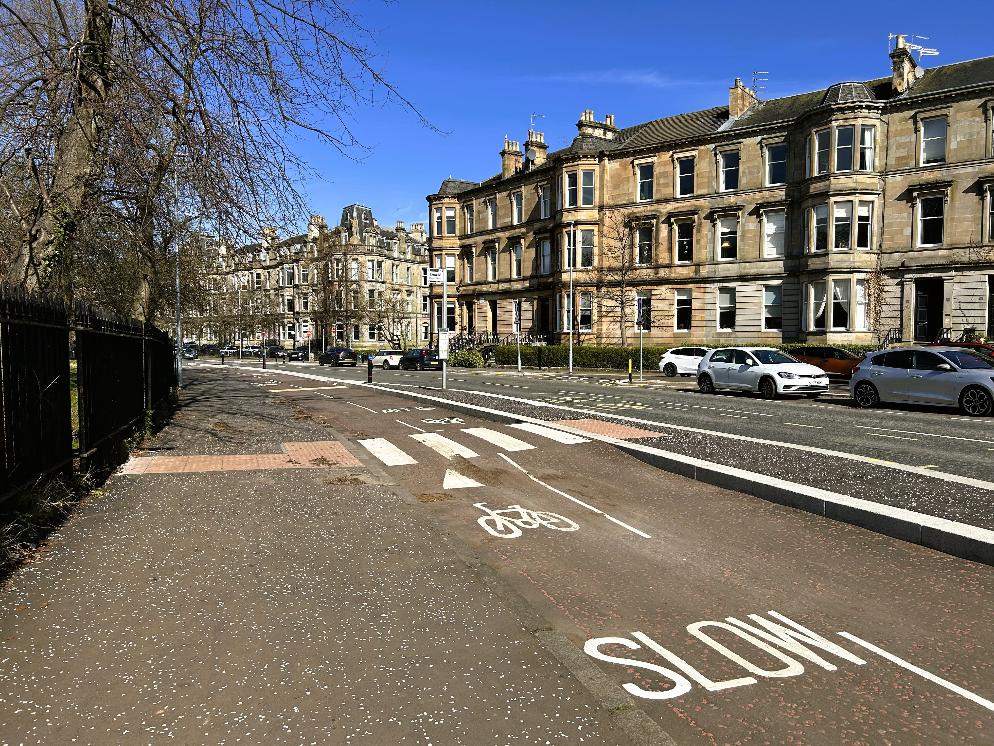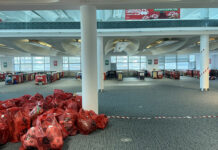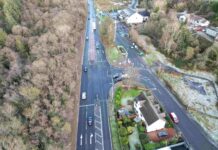
THE first phase of Glasgow’s connecting Battlefield active travel project has seen around 900 people a day use a new cycle way on Queen’s Drive which extends south onto Langside Road.
The work parts of a wider project to deliver a city network of active travel routes, which will aim to add 270km of segregated cycle ways to existing routes across Glasgow.
Phase one of the Battlefield project was completed in November, with it offering easy access to key destinations such as Queen’s Park and the New Victoria Hospital, whilst also linking to the South City Way at Victoria Road.
Phase two is set to focus on Grange Road, Battlefield Rest Junction, and Battlefield Road currently at the detailed design phase, with construction anticipated to start in Autumn 2025.
To highlight the significant progress made in active travel in Glasgow, councillor Angus Millar, the city convener for transport and climate at Glasgow City Council, recently joined Fiona Hyslop, the Scottish Government cabinet secretary for transport, along with active travel supporters from the NHS Greater Glasgow and Clyde, Bike for Good, and the local community group South Seeds, to visit the first phase of the connecting Battlefield project.
Councillor Angus Millar said, “The success of the first phase of the connecting Battlefield project shows that where we provide safe, segregated active travel infrastructure, more Glaswegians will make use of it. This project directly connects to the South City Way cycle route to the city centre and is a great example of how we are building up a connected network of routes that help people get about the city safely by bike and on foot.
“Encouraging more people to travel actively can create a cleaner, more cost-effective, and healthier transport network that makes the best use of our limited road space and operates efficiently for everyone. It is crucial that everyone has easy access to safer routes for active travel and I look forward to the project’s second phase starting later this year which will deliver improvements in the Grange Road area.”
Fiona Hyslop said, “I am pleased to see the extensive use of the first phase of Connecting Battlefield, which was funded through the Scottish Government’s Transport Scotland’s active travel transformation fund.
“The positive response to the new cycle way shows just how important active travel routes such as this one are to local communities across Scotland. Active travel routes like this one, enable more people to save money, live healthier lives and leave their car at home to reduce their emissions. To support the ambitions of Scotland’s local authorities for more high-quality active travel infrastructure, we are investing £188 million into active and sustainable transport in 2025-26. This will help ensure more people and communities across Scotland can benefit from easier sustainable travel options.”
John Clelland is a Healthcare Support Worker with NHS Greater Glasgow and Clyde and works shifts at New Victoria Hospital. He lives in the area and regularly uses the new active travel route to walk to work. John said, “I use the route almost every day either going to or from work, or to get to other parts of the local area. It’s definitely an improvement and you can see it’s being well used by people walking or cycling. I know a lot of people who work in the hospital who use it as part of their journey to get here, and it seems to be encouraging more people to walk or cycle to work. As a pedestrian it is good to see the improvements that have been made to prioritise the busy crossing for those of us on foot.”











